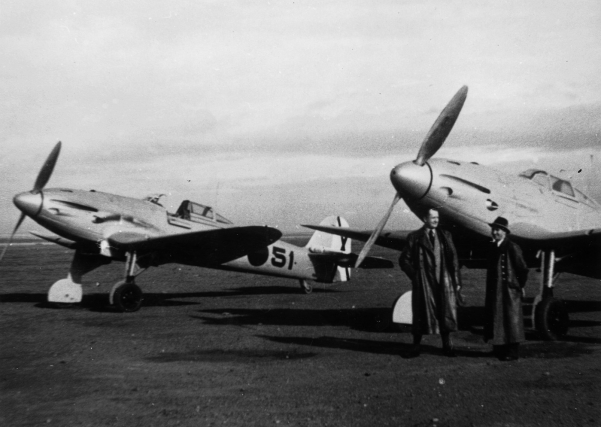
One of the first requirements issued under the Nazis by the rapidly expanded Reichsluftfahrtministerium was a specification for a monoplane fighter to replace the Arado 68 and Heinkel 51. Designed by a Heinkel team under Walter Günthers (who was also responsible for the He 70), the He 112 was Heinkel’s entry to the competition.
The Heinkel was comparatively advanced, and the first of an eventual 12 prototypes flew in the summer of 1935. During the programme a number of powerplant, fuselage, wing and tail unit configurations were investigated. The Luftwaffe then selected the Bf 109, but the German Air Ministry was sufficiently impressed with the Heinkel to order 43 He 112B-0 pre-production aircraft that operated with a fighter wing during 1938. Seventeen of the aircraft were sent to Spain to fight in the Civil War (not as part of the Condor Legion, but flown instead by civilian volunteers), after which the 15 survivors were passed to the Spanish Nationalist forces. Of the others, Germany sold 13 each to Japan and Romania, the latter subsequently also acquiring 11 of the 13 He 112B-1 production aircraft for service up to 1942, notably during the invasion of the Soviet Union in June 1941. Hungary also acquired a few aircraft.
Specifications
- Manufacturer
- Ernst Heinkel A.G.
- Type
- Fighter, Ground-Attack
- Length
- 9.30m (30ft 6in)
- Span
- 9.10m (29ft 10.25in)
- Height
- 3.85m (12ft 7.5in)
- Maximum Speed
- 510km/h (317mph)
- Service Ceiling
- 8500m (27,890ft)
- Range
- 1100km (683 miles)
- Crew
- One
- Powerplant
- 1 x Junkers Jumo 210Ea
- Armament
- 2 x cannon, 2 x MG
- Bomb Load
- 60kg (132lb)
- First Flight
- September 1935
- Initial Climb
- 700m (2,300ft) per min
- Weight (empty)
- 1620kg (3571lb)
- Weight (loaded)
- 2250kg (4960lb)
